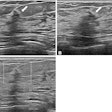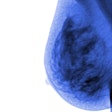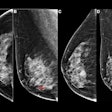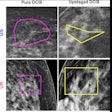
Black and Hispanic patients are more likely to attend a facility with fewer resources and less likely to access highly accredited medical facilities for breast cancer diagnosis and treatment, according to research published July 8 in the Journal of the American College of Radiology.
Researchers led by Garth Rauscher, PhD, from the University of Illinois at Chicago found that racial and ethnic minority patients were more likely to experience treatment delay and less likely to have a sentinel node biopsy or report being recommended for hormone therapy.
"These analyses are the first that we are aware of to examine whether access to accredited versus nonaccredited facilities at initial presentation might influence later medical events during diagnosis and treatment," the team wrote.
Hospitals that have fewer resources are often designated by the U.S. Centers for Medicare and Medicaid Services as "disproportionate share hospitals." Researchers say these hospitals serve a disproportionate number of low-income patients and provide a substantial amount of uncompensated care.
The U.S. government, meanwhile, provides funding to these hospitals, which receive at least partial compensation for the services they provide.
Rauscher told AuntMinnie.com that facilities that have more resources and accreditations tend to see a more advantaged population. Meanwhile, facilities that see more disadvantaged patients, like disproportionate share hospitals, also have fewer available resources to treat patients.
"It is unlikely that disproportionate share hospital payments fully compensate a facility for the full cost of care of uninsured and Medicaid patients," he said.
The team was interested in understanding whether inequities in the resources and accreditation of the initial presentation facility might account for some of the disparities.
They analyzed data from the population-based Breast Cancer Care in Chicago study, where detailed interviews and medical record abstractions were conducted for newly diagnosed patients with a first primary in situ or invasive breast cancer from 2005 to 2008. Patients included non-Hispanic whites, non-Hispanic Blacks, and Hispanics.
The researchers also looked at facilities with accreditation, including the Breast Imaging Center of Excellence, the National Commission on Breast Cancer, and the National Accreditation Program of Breast Centers.
They found that 47% of Hispanic and 37% of non-Hispanic Black patients presented at a facility designated as a disproportionate share hospital, compared to 11% of non-Hispanic white patients.
Moreover, 81% of non-Hispanic white patients presented at a facility with the accreditation of Breast Imaging Center of Excellence, compared to 46% of non-Hispanic Black patients and 49% of Hispanic patients.
| Patients who initially presented at disproportionate share hospitals vs. highly accredited facilities | |||
| Non-Hispanic whites | Non-Hispanic Blacks | Hispanics | |
| Disproportionate share hospital | 11% | 37% | 47% |
| Breast Imaging Center of Excellence | 81% | 46% | 49% |
| National Commission on Breast Cancer | 25% | 19% | 17% |
| National Accreditation Programs of Breast Centers | 54% | 18% | 12% |
The team also found that patients in ethnic and minority groups reported having less timely treatment, fewer sentinel node biopsies, and fewer hormonal therapy recommendations than their white counterparts.
"Taken together, this creates inequities in terms of diagnostic and treatment experiences that negatively impact racial and ethnic minority groups and low socioeconomic status patients," Rauscher told AuntMinnie.com.
The researchers said they would like to look at data from the Breast Cancer Surveillance Consortium, as well as examine a larger sample size, to further investigate these associations and their potential role in mediating ethnic disparities in breast cancer diagnostic and treatment outcomes.




















